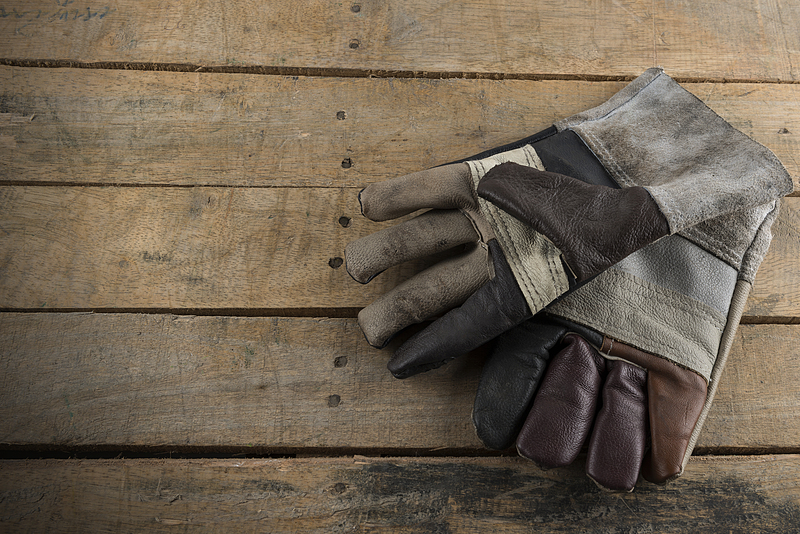Maximizing Longevity: Freezer Storage Tips
Posted on 29/05/2025
Maximizing Longevity: Freezer Storage Tips
Freezer storage is a cornerstone of modern food preservation. From delicious home-cooked meals to bulk grocery buys, proper freezing techniques ensure your food stays fresh and safe for as long as possible. However, simply tossing food into a freezer isn't enough. To truly maximize the longevity of your frozen items, you need to follow smart storage principles. This comprehensive guide will walk you through proven freezer storage tips to keep your food tasting better and lasting longer.
Why Proper Freezer Storage Matters
The freezer is your kitchen's secret weapon, extending food's shelf life for weeks or even months. But improper storage can lead to freezer burn, loss of flavor, texture changes, and ultimately spoiled food. Understanding the science of freezing and learning the best practices for freezer storage can save you money, reduce waste, and expand your culinary possibilities.
- Prevent Waste: Store bulk and leftover food without throwing it away.
- Save Money: Buy in bulk and preserve seasonal produce year-round.
- Maintain Quality: Lock in nutrients, flavor, and texture for optimal dining experiences.

The Science Behind Freezing Food
Freezing works by turning the water content of food into ice, which slows down the activity of bacteria, yeast, and molds that cause food to spoil. However, the way you prepare and store your food before placing it in the freezer significantly impacts its frozen shelf life and overall quality.
- Water Content: Foods high in water are more susceptible to texture changes during freezing and thawing.
- Air Exposure: Oxygen leads to freezer burn and nutrient loss.
- Temperature: Consistent cold (-18?C or 0?F or lower) is essential for longevity and safety.
Essential Freezer Storage Tips for Maximizing Longevity
1. Use Appropriate Packaging
Packaging is your first line of defense. The right packaging minimizes air exposure, prevents freezer burn, and guards against flavor loss.
- Vacuum Sealers: These remove air and lock in freshness, offering the best protection for long-term storage.
- Freezer-Safe Bags & Containers: Always choose bags or containers marked "freezer safe." Heavy-duty, double-zip bags or rigid plastic containers work well for most foods.
- Aluminum Foil & Plastic Wrap: Wrap foods tightly before placing them in a bag or container for double protection.
Tip: Press out as much air as possible before sealing. Double wrap for extra longevity!
2. Portion and Pre-Freeze
Divide your food into practical serving sizes before freezing. This makes it easier to thaw only what you need and reduces the risk of compromising food quality by repeated thawing.
- Flat Freezing: Lay bags flat so they stack efficiently and thaw quickly. This is great for soups, stews, and sauces.
- Single Portions: Individually wrap chops, burgers, or portions so you can grab exactly what you need.
3. Label Everything Clearly
Always write the name of the item and the date frozen on each package. This simple step ensures you'll never play the "mystery meat" guessing game and helps you use the oldest items first.
- Permanent Markers: Won't smudge or fade in cold temperatures.
- Printable Labels: Consider printable, freezer-safe labels for a neat, organized freezer.
4. Maintain Proper Freezer Temperature
Consistency is key: Your freezer should stay at or below 0?F (-18?C). Fluctuating temperatures cause thawing and refreezing cycles, which can degrade food quality and safety.
- Use an Appliance Thermometer: Don't rely on your freezer's dial--verify with an appliance-safe thermometer.
- Keep Doors Closed: Avoid leaving the freezer open for extended periods.
5. Organize for Efficiency
A tidy freezer doesn't just look good; it helps you maximize the longevity of your freezer storage by ensuring even airflow and easy access to older items.
- First In, First Out (FIFO): Place newer items at the back and bring older packages forward.
- Group Like Items: Store meats, veggies, fruits, and prepared meals in their own zones to minimize searching and exposure.
- Use Bins: Group smaller items in labeled containers for easy pull-out access.
Specific Tips for Different Foods
Not all foods freeze the same. Here's a breakdown of how to maximize freezer life for various categories:
Meat & Poultry
- Trim Excess Fat: Fat can become rancid in the freezer even when stored cold.
- Portion Before Freezing: Cut large packages into meal-size portions.
- Double Wrap: Use plastic wrap followed by foil, then inside a freezer bag.
- Label With Cut & Date: "Chicken thighs, 01/10/24"
Seafood
- Pat Dry: Remove excess moisture before packing.
- Vacuum Seal When Possible: Fish and shellfish benefit from low oxygen exposure.
- Use Quickly: For best quality, seafood should be consumed within 3-6 months.
Fruits & Vegetables
- Blanch Before Freezing: Briefly boil, then ice-bath most veggies to preserve color and texture.
- Flash Freeze: Arrange fruit or veg on trays so they freeze individually, then transfer to bags for ease of use.
- Don't Freeze High-Water Salad Greens: Lettuces become mushy and are best avoided.
Baked Goods
- Pre-Slice Bread: Freeze slices individually for grab-and-go convenience.
- Cool Completely: Only freeze cakes, muffins, and breads after they're fully cool.
- Double Wrap: Prevents both freezer burn and flavor transfer.
Dairy & Eggs
- Cheese: Hard cheeses freeze well when grated; soft cheeses can become crumbly.
- Milk: Leave room in containers for expansion; shake well after thawing.
- Eggs: Do not freeze in shells. Beat, then pack into freezer-safe containers.
Prepared Meals & Leftovers
- Cool Before Packaging: Hot food causes condensation and ice crystals.
- Use Shallow Containers: Allows for faster, safer freezing and thawing.
- Label with Full Details: "Beef stew, 2 cups, March 2024"
Preventing Freezer Burn and Quality Loss
Freezer burn occurs when air reaches improperly protected food, dehydrating and oxidizing the surface. While not harmful, it impacts taste and texture.
- Minimize air exposure with vacuum sealing or tight, double-wrapping.
- Fill containers as full as possible to push out air.
- Avoid frost buildup; defrost your freezer as needed to maintain efficiency.
Safe Thawing Techniques
Longevity is only part of the equation--you must also thaw food safely to enjoy its preserved quality. Here's how:
- In the Refrigerator: Safest method; plan ahead as it takes several hours or overnight.
- Cold Water Bath: For faster thawing, submerge sealed food in cold water, changing the water every 30 minutes.
- Microwave: Only if you plan to cook immediately; microwaves can produce uneven thawing.
Frequently Asked Questions About Freezer Storage Longevity
How long can I store food in my freezer?
The answer depends on the type of food and your storage method. Here's a quick reference guide:
- Raw Chicken: 9-12 months
- Beef Steaks: 6-12 months
- Fish: 3-6 months
- Bread: 3 months
- Fruit & Vegetables: 8-12 months (blanched and properly packed)
- Cooked Meals: 2-3 months
Always check for signs of freezer burn, off-odors, or discoloration before consuming.
Can I refreeze thawed food?
If food has thawed in the refrigerator and hasn't been left at room temperature for more than two hours, it can generally be refrozen, although some quality may be lost. Never refreeze food that has thawed at room temperature or in warm water.

Advanced Tips for Maximizing Freezer Longevity
- Invest in a Deep Freezer: Chest and upright freezers often offer more consistent temperatures than fridge-freezer combos.
- Rotate Stock Regularly: Set monthly reminders to check dates and organize contents.
- Freeze at Peak Freshness: Frozen food will only ever be as good as it was when first frozen.
- Keep Freezer Full: A full freezer holds temperature better during power outages; use bags of water to fill empty spots if necessary.
- Monitor Power Outages: If you lose power, keep the freezer door closed. A full freezer can keep food frozen for up to 48 hours.
Final Thoughts: Unlocking the Full Potential of Freezer Storage
Proper freezer storage is about more than convenience--it's about maximizing longevity, preserving your food budget, and reducing waste. By using airtight packaging, maintaining the right temperature, organizing strategically, and understanding how different foods respond to freezing, you can keep your frozen foods tasting great for months on end.
Start implementing these freezer longevity strategies today and enjoy the benefits of delicious, nutritious meals whenever you open your freezer door. For more tips on food safety and preservation, browse our additional resources and make your kitchen work smarter for you!



